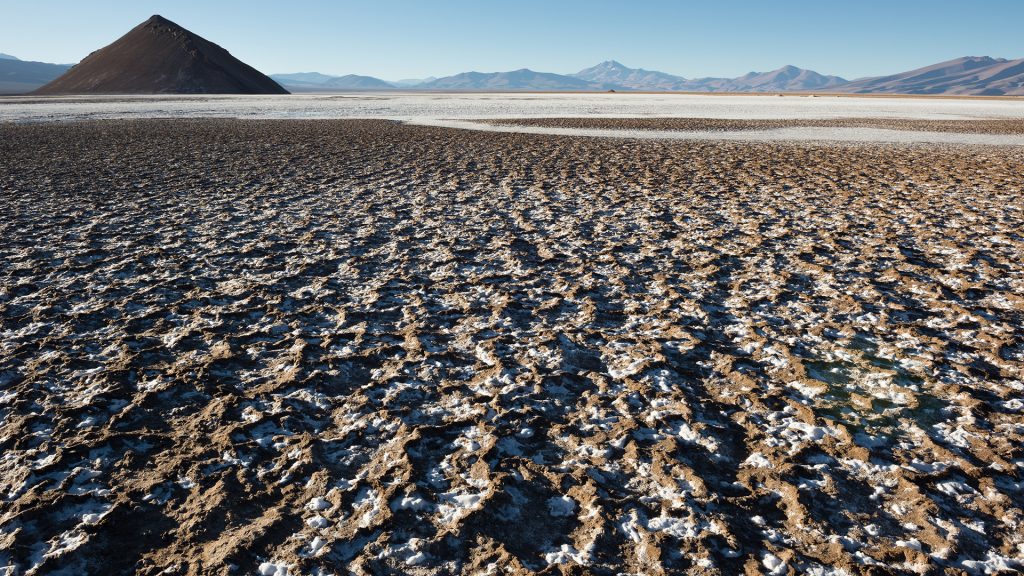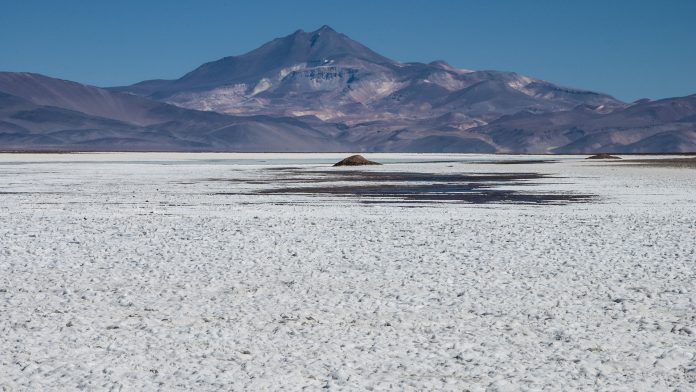Andrew Phillips, Executive Director and Chief Financial Officer at Lithium Power International Ltd details the Maricunga lithium carbonate project in Chile and how it will develop into a crucial supplier for a hungry global market.
The much-anticipated release of Lithium Power International’s (LPI’s) updated definitive feasibility study for Stage One of its Maricunga project in Chile, with a NPV of $1.4bn (after tax), shines a green light for South America’s most advanced lithium brine development. While delayed for some months by COVID-19, it provided the opportunity for an extensive re-evaluation of the lithium carbonate development. The revised plan provides copious information about its impressive potential and high investment returns in a world increasingly hungry for lithium to power the global battery revolution. LPI has all the approvals it requires to commence the development of Stage One of the project once financing proposals are signed in 2022 and engineering, procurement and construction contracts are inked.
The project remains highly competitive compared to other global lithium projects jostling to get underway. Unlike other lithium brine projects in development, LPI decided to ensure that Maricunga was de-risked, moving towards construction as much as possible to attract potential financial partners. This would ensure that the project and its shareholders could recognise the best possible value. This strategy has resulted in adopting a staged approach to the development.
Stage One will rely on an engineering design based on established and traditionally used evaporation technology and specific enhancements to the engineering process. It was believed that new technology, such as direct extraction, was largely unproven in a large-scale production environment. There were issues with the possible impact on the salar, which needed to be considered regarding the already approved Environmental Impact Assessment report. Stage One of the project is fully permitted, and construction can commence immediately upon securing the final project funding. This is currently in process, with a non-binding Memorandum of Understanding, with Mitsui being the most developed of these discussions. It was also decided to resist the temptation to sign an off-take agreement. It was viewed that any potential financiers could also be producers, and any pre-agreed off-take agreements could detract from the overall appeal of the project for strategic partners. This strategy has proved to be correct, with several inbound inquiries having been received over the past six months, as the finalising of the Stage One definitive feasibility study has been in progress.
Maricunga sits towards the lower end of the lithium carbonate cost curve, providing the opportunity for it to benefit from the global move to zero-carbon energy. The newly updated project study points to extra benefits from competitive and sustainable processing and transportation charges. It also points to reduced estimates for the disposal of unwanted salts. It helps that the project is located in the world-renowned Lithium Triangle in the dry, high altitude deserts of Northern Chile. The region already boasts some low-cost, world-class producers. Sited at 3,750 metres above sea level, the Maricunga salar benefits from high natural water evaporation rates, which will provide LPI with a competitive advantage from its planned brine evaporation ponds. This translates to expectations of healthy projected investment returns; something factored into the project’s economics even before lithium prices started to shoot skywards during the last year. With its already excellent infrastructure with water and electricity supply and established roads that provide direct access to the project site, Marucinga is an advanced and attractive project.
The 15,200 tonnes of lithium carbonate equivalent (LCE) to be produced in each of the projected 20 years of Maricunga’s Stage One operation will provide an estimated $1.4bn net present value after tax at an 8% discount on current prices. The internal rate of return (IRR) is estimated to be 39.6% for a payback period of two years on the forecasted CAPEX of $626m.
Low-cost processing methods, transportation and salt disposal, means the development sits at the lower end of the lithium carbonate cost curve. With operating expenditure of $3,718 per tonne of lithium carbonate produced, the venture is expected to yield annual pre-interest, tax, depreciation and amortisation profits of $324m. These projections are being well received by potential financial partners, who have closely followed the project for some time. Preliminary indications have been received from international financial institutions and private funds looking to provide equity and debt financing. The finalisation of that financing process is likely to take several more months.
The expected operating expenditure at Maricunga of $3,718/t compares favourably with costs reported by all brine producers of between $3,650/t to $4,850/t. Costs for lithium mined from hard rock spodumene mines are mainly in the range of $6,750/t to $9,150/t. Lepidolite feedstocks in China typically incur costs of around $5,400/t. Recent estimates from lithium experts Roskill has estimated that the marginal costs of producing refined lithium of both carbonate and hydroxide would range between $6,000-$8,000/t through to 2036.
LPI is making encouraging progress with Mitsui & Co, Ltd. The Japanese trading and investment company signed a strategic, non-binding alliance with the company in May 2021 to advance the development of Maricunga and potentially other co-owned Chilean lithium projects by introducing leading-edge, efficient and environmentally friendly processing technologies. Having such a strong international partner brings LPI considerable benefits as it moves into the development and marketing phase of the project. Also included in the agreement are potential off-take and funding rights for the Stage One project and also for any future expansions.
Environmental, social and governance (ESG) at Maricunga
Environmental, social and governance (ESG) aspects will be of the highest standard. The project aims to achieve carbon neutrality once the operation beds down and set new markers for social relationships within the Maricunga region and in Chile itself. This process will be certified by Deloitte and ongoing during the coming years as the project advances. Project infrastructure and water rights have been secured by long term contracts, and access to the National Power Grid has been granted, including an important renewable energy component.
Pre-development work, investment and costs
Apart from debt and equity financing, where preliminary indications of interest have been received from international financiers for debt and equity participation, pre-development work also is gaining pace. Engineering, procurement and construction (EPC) contractors have been closely reviewing project details, initially for the updated Definitive Feasibility Study (DFS) and also on the project proposals so that a formal investment decision can be made this year. Tier one engineering companies Worley and Bechtel previously undertook the EPC proposal for the project.
Stage One of Maricunga is currently owned and operated by Minera Salar Blanco SA (MSB), which is owned by LPI 51.55%, Minera Salar Blanco SpA 31.31% and the Canadian-listed Bearing Lithium Corp 17.14%. Some investors have been keen to simplify the ownership structure before the project comes online to make the venture more attractive to global investors. Whether this can be achieved and what the details might be have been speculated upon by the market, but nothing has yet been decided. One matter that may bring fresh focus is the project’s well-advanced funding negotiations.
The development has several competitive advantages, which place it towards the lower end of the lithium carbonate cash cost curve. These include lower cost processing methods and transportation and reduced charges for the disposal of salts. The overall cost of Stage One includes direct development of $419m, indirect costs of $145m and contingencies of $62m.

The Environment Impact Assessment
The process has involved in-depth data gathering, various environmental and engineering studies and monitoring campaigns, which resulted in a comprehensive Environment Impact Assessment (EIA). This 11,400-page document includes complete environmental baseline studies, hydrogeological modelling, human, archaeological, fauna and flora characterisation, and impact evaluation. The EIA also included a lengthy process of social engagement with the local Colla indigenous communities. In addition, significant consultation took place with regional authorities and local organisations. The EIA is the primary environmental permit for the construction and operation of the project. Because this has already been granted to MSB, Stage One of the project is fully permitted for construction to commence.
When the updated DFS was released in January, LPI’s Chief Executive Officer, Cristobal Garcia-Huidobro, said the priority for this year was to finalise project finance for Stage One. But, there is also scope for developing Stage Two in the larger picture. “We are continuing to work on the development of a subsequent Stage Two at Maricunga, considering the significant growth forecast in lithium demand and Stage One being in its final phase of pre-production”, he said.
Our work at the Maricunga lithium carbonate site
To appreciate the positive vibes surrounding the project, one needs to understand a little about the work undertaken in past years. MSB first carried out exploration, drilling and testing on-site in 2011. This was based on information from an initial seismic survey, which defined the basin’s lithology and geography, and later a geophysical survey to map the basin’s geometry and water interface. Exploration drilling between 2011-18, mostly to a depth of 200m, collected brine samples. Two production wells were completed to facilitate pumping tests and to provide samples for laboratory testing on the brine and for porosity analysis. This work identified the existence of eight major geological units.
MSB received a production licence in 2018 from the Chilean Nuclear Energy Commission, allowing it to produce and sell 35,554 tons of lithium metal equivalent. A year later, it completed its initial DFS based on brine pumped from depths up to 200m. In 2020, it was granted all environmental approvals to develop a lithium extraction and processing facility. On February 4, 2020, the environmental approval covered both construction and operation for 20 years. The project’s EIA approved a brine extraction rate of 209 litres/second, freshwater extraction of 35 litres/second and all associated industrial facilities, including evaporation pond areas, brine pipelines and a campsite. The EIA, prepared by international consulting company Stantec, was submitted to the Chilean Environmental Assessment Service in September 2018 and was the culmination of more than two years of field and desk work.
Last year, as the onset of COVID-19 hindered plans, a new drill testing programme was undertaken on the concessions under the 1932 mining code (Old Code); approximately half of the project area was tested for lithium in brines up to a depth of 400m. The other half is designated as New Code under the 1982 mining code and requires one further permit from the Chilean government. Initially, drilling was undertaken only to a depth of 200m. Success in the latest drilling has enabled MSB to refocus the project so that brine can be extracted from a more contained area on the fully permitted Old Code concessions, using a staged development approach. The new drilling programme increased the resources contained within the Old Code concessions from 1 million tonnes of lithium carbonate to 1.9 million tonnes. It should be noted that the initial drilling programme also resulted in 1 million tonnes of lithium carbonate resources under the New Code concessions. Assessments from the new programme suggest that the response will increase to the same level as under the Old Code.
On the salar, the brine will be extracted from 11 production wells operating concurrently. An average annual feed rate of 13,000 cu m of brine is required to be pumped each day to the evaporation ponds to achieve the average annual lithium carbonate production of 15,200 tonnes. There will be seasonal changes in the flow rate, increasing in the summer when evaporation rates will be higher and decreasing in winter. The ponds will be sited to the North of the salar and cover 5.36 million2 metres.
This process results in the crystallisation of salts, which are periodically harvested and stored in stockpiles. The concentrated brine will be pumped into reservoir ponds, which will feed a salt removal plant. This stage removes calcium impurities, such as calcium chloride and tachyhydrite to provide a stable feed for the lithium carbonate plant through consecutive evaporation and crystallisation steps. This allows a higher and faster lithium concentration in the brine and reduces lithium losses that occur with precipitated salts.
The concentrated brine taken from the salt removal plant is then fed into the lithium carbonate plant, where it undergoes a process of purification, ion exchange and filtration. Remaining impurities such as boron, calcium and magnesium will be removed. The concentrated lithium brine then goes into a carbonation stage involving adding soda ash. The precipitated lithium carbonate is then fed into a centrifuge to remove the water before being packaged.
The process has been designed to achieve a high-quality product consistently and continuously. Testing showed, for instance, that high concentration rates in summer could lead to significant losses in lithium in the form of lithium borates and the entrapment of crystallised salts in the evaporation ponds. The modified process should reduce the rate of losses and the consumption of chemical reagents. It will also allow water recovery.
A lithium carbonate plant includes ion exchange, the removal of magnesium and calcium, the separation of solid and liquid materials, drying, packing and storage. Other materials to be stored on-site include SX reagents, hydrochloric acid, caustic soda, soda ash, lime and minor reagents. There will also be a fuel station, an air compressor room, a boiler room and a water treatment plant. A modular camp will initially house up to 1,200 people while construction is undertaken, reducing to 232 during the operational phase. An electrical substation will connect to the nearby power grid. A long-term lease has been negotiated for the water supply.
Through its joint venture company MSB, LPI is well set to become the next lithium producing mine in Latin America, producing high-quality battery-grade lithium carbonate for a market hungry for this product. LPI is ready to ride the wave of demand for green and sustainable energy solutions as the world transitions to electric vehicles and other forms of renewable energy storage.
Please note, this article will also appear in the ninth edition of our quarterly publication.









